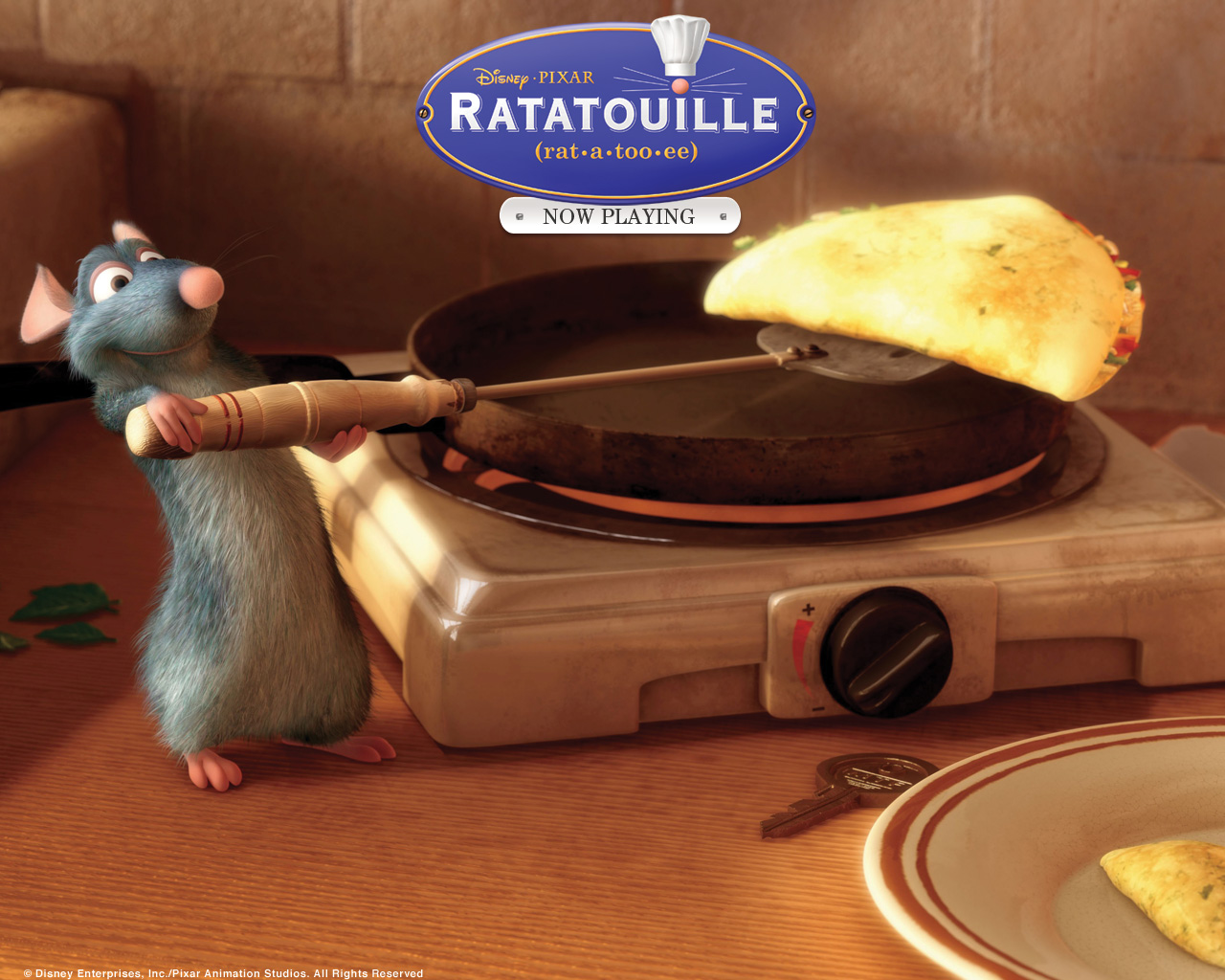

Photograph: Felicity CloakeĪlthough, until recently, most Provençal kitchens are unlikely to have boasted an oven, ratatouille, as we have noted, is not a dish with much history, so Nigel Slater's recipe, which cooks the vegetables separately and then bakes them for 40 minutes with sliced tomatoes, seasoning and thyme, seems like the perfect solution to the insipidness of my previous attempts. It's definitely better than my first attempt the texture of the vegetables is creamier, and the sauce richer, but it still lacks any real depth of flavour. I find the results a bit watery for my taste, so I take off the lid and simmer for another quarter of an hour.

Finally, the softened onions, peppers, tomatoes, courgettes and aubergines meet in the same pan with 150ml water and are cooked, covered, for 20 minutes along with a bouquet garni.
#Ratatouille cartoon skin
It's true their method is time-consuming unlike Raymond's casual chop and toss-it-in approach, I must char and skin the peppers, blanch and skin the tomatoes, and employ two pans to cook everything separately, draining each vegetable well after cooking. Ratatouille cannot be hurried, the book says sternly, so I should "make plenty and enjoy the leftovers" – which seems sensible advice.

Ratatouille is clearly a dish which demands greater effort – so I turn to Gui Gedda and Marie-Pierre Moine's Provence Cookery School, which promises to teach me to 'shop, cook and eat like a native' (while paying twice as much for my sun-kissed ingredients). It's nice enough, but no more than the sum of its parts frankly. One may then stir in 2tbsp tomato puree, and 4 chopped tomatoes, season, and simmer until the vegetables are tender, and voila – a ratatouille, of sorts. Raymond Blanc agrees, giving a recipe in his Foolproof French Cookery which calls for one to soften 2 diced onions with 4 sprigs of fresh thyme, then add 4 cloves of crushed garlic, 2 large red peppers, 2 large courgettes and 1 medium aubergine, all cut into dice, and cook for 2 minutes. Larousse Gastronomique notes that "according to the purists, the different vegetables should be cooked separately, then combined and cooked slowly together until they attain a smooth, creamy consistency." It then, with characteristic Gallic insouciance, goes on to give a recipe in which everything is lumped in together and pedants be damned. Photograph: Felicity CloakeĪ ragout, of course, suggests something cooked long and slow on the hob – but there is some debate about whether the constituent parts should be cooked together, or separately. So authenticity probably isn't something we need to worry about with ratatouille, which is fortunate, given the variety of recipes I come across.

It is not until the 1930s that it becomes associated with a 'ragout of aubergine with tomatoes, courgettes and sweet pepper'. The word, which comes from the French touiller, to stir, first pops up in 1877, misspelled, in reference to a meat stew. In the face of this onslaught of roasted veg, ratatouille seems like a quaint hangover from a bygone age, when goat's cheese was strictly for smelly Frenchies and basil meant boom boom.Ī stalwart of the 1980s dinner party, ratatouille always gave the impression of being an ancient peasant dish one might have picked up from some darling ancient peasant neighbours of Peter Mayle, when in fact, according to Alan Davidson's wonderful Oxford Companion to Food, it's a relatively recent creation. Vegetable stocks in the Mediterranean must be running dangerously low judging by the multicoloured medleys that pop up in every pub panino, potato and vegetarian pastry parcel these days.


 0 kommentar(er)
0 kommentar(er)
